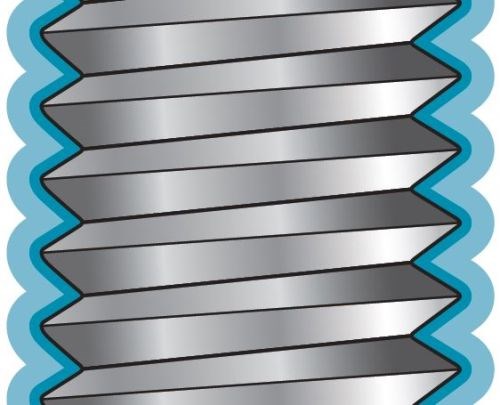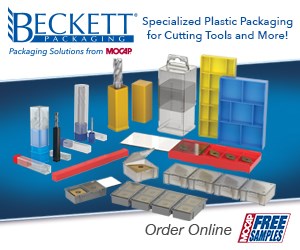Choosing the Best Threading Method
What’s the difference between rolling and cutting threads? This tip sheet provides useful insights into which method will best produce a threaded part that will meet your requirements.

When should you choose rolled threads over cut threads?
Not all designers specify rolled versus cut threads when submitting part specifications, but there are good reasons to do so. Vallorbs Jewel Co. has formulated a Guide to Threads Tip Sheet explaining when you would want to choose one type over the other, and why. Considering the following points (abbreviated here) can help reduce production costs and improve strength and product performance.
- Type of material: The rule of thumb is that materials that are easy to roll are difficult to cut and vice versa. This is true in the majority of instances. The determining factor is plasticity. Materials that have good plasticity are better suited for rolling.
- Reliability: Rolling threads have an increased ability to resist fatigue. Applications with threaded parts and fasteners that are expected to operate reliability in high-pressure environments will benefit from rolled threads versus machined.
- Required part strength: As with reliability, rolled threads provide increased part strength. Parts that are rolled have a root hardness that can be as much as 20 to 30 percent greater than those that are cut.
- Chipless operation: Rolling creates burr-free knurls and eliminates chatter. A rolled thread is less likely to have any debris that flakes off the component and enters the operating environment.
- Quantity/order size: Jobs with large production volumes may lend themselves to rolling, if other qualities to do not dictate that cutting be used instead (such as material selection). Production speeds in the rolling machining process are much faster than those of cutting.
- Required tolerances: For parts that require high degrees of tolerance and limited variation from part to part, rolling offers significant advantages over cutting, ensuring that the last part produced will be as perfect and precise as the first.
- Required surface finish: Applications that require fasteners with a superior surface finish will want to select rolling over cutting. Rolled threads are burnished and work hardened by the rolling process and, as a result, have a better appearance.
- Type of thread: For applications that require very deep or coarse threads or those that require multiple threads, cutting should be the primary consideration. Rolling does not allow for the angle to be great enough to accommodate most types of multiple threads or very deep/non-precise threads.
- Type of application: The application in which the fastener or threaded part will be used may also determine if rolling or cutting is employed. Some industries, such as aircraft components or nuclear components require rolling.
Download a PDF of the full Guide to Threads Tip Sheet here. Also read this article about how Vallorbs approaches training operators on Swiss-type lathes.
Related Content
-
Custom PCD Tools Extend Shop’s Tool Life Upward of Ten Times
Adopting PCD tooling has extended FT Precision’s tool life from days to months — and the test drill is still going strong.
-
10 Ways Additive Manufacturing and Machining Go Together and Affect One Another
Forget “additive versus subtractive.” Machining and metal additive manufacturing are interconnected, and enhance the possibilities for one another. Here is a look at just some of the ways additive and machining interrelate right now.
-
The Future of High Feed Milling in Modern Manufacturing
Achieve higher metal removal rates and enhanced predictability with ISCAR’s advanced high-feed milling tools — optimized for today’s competitive global market.












